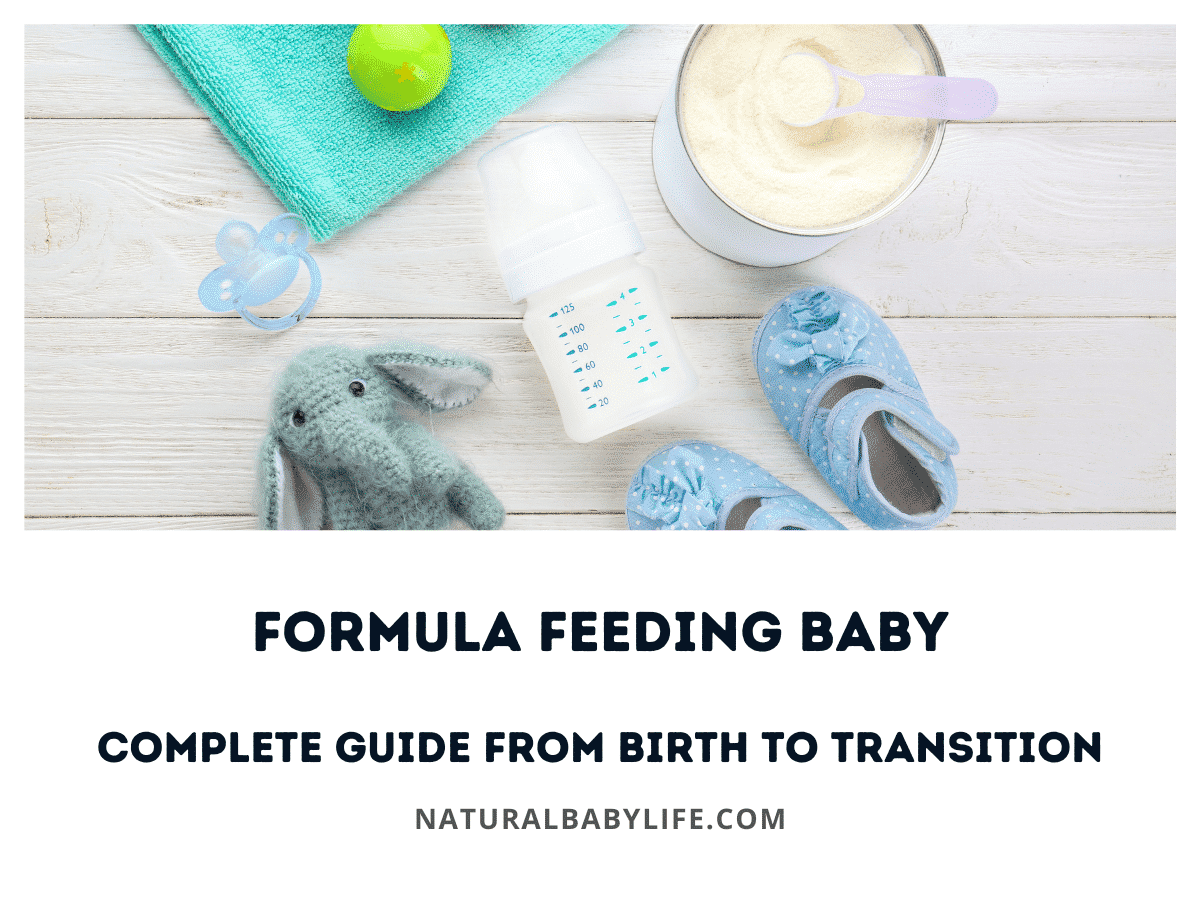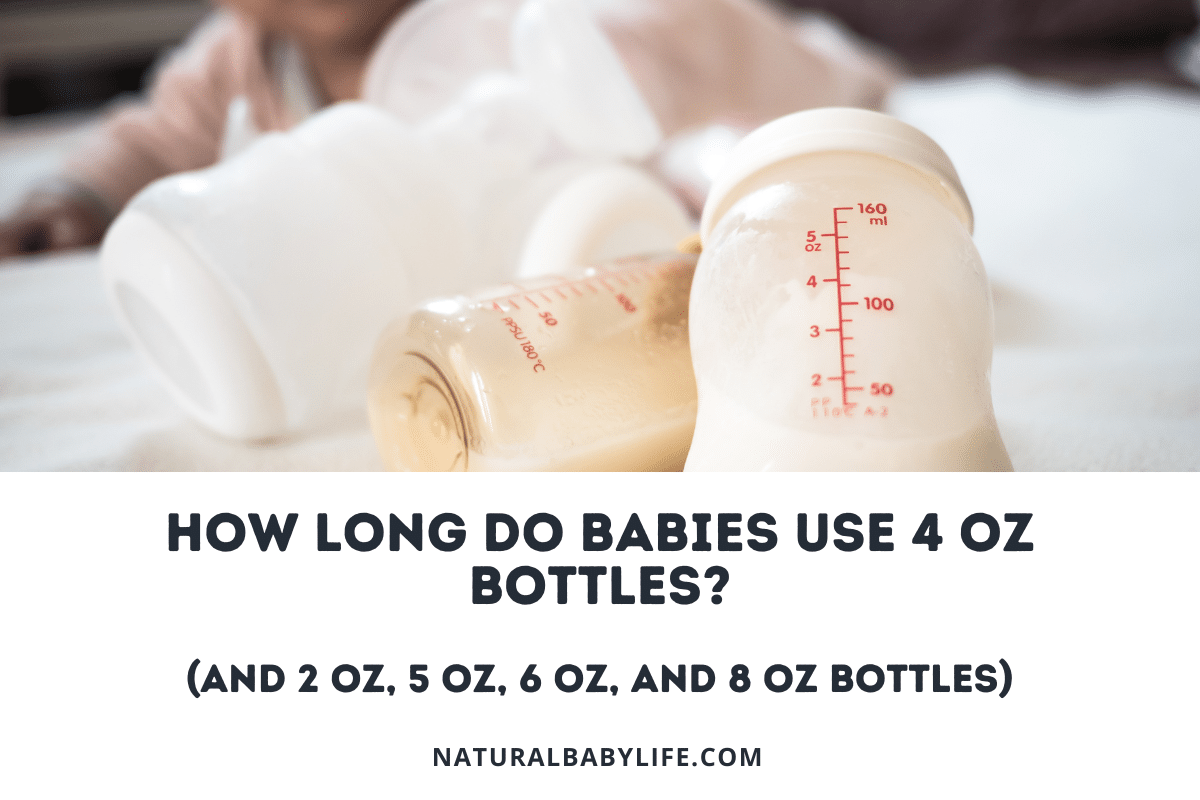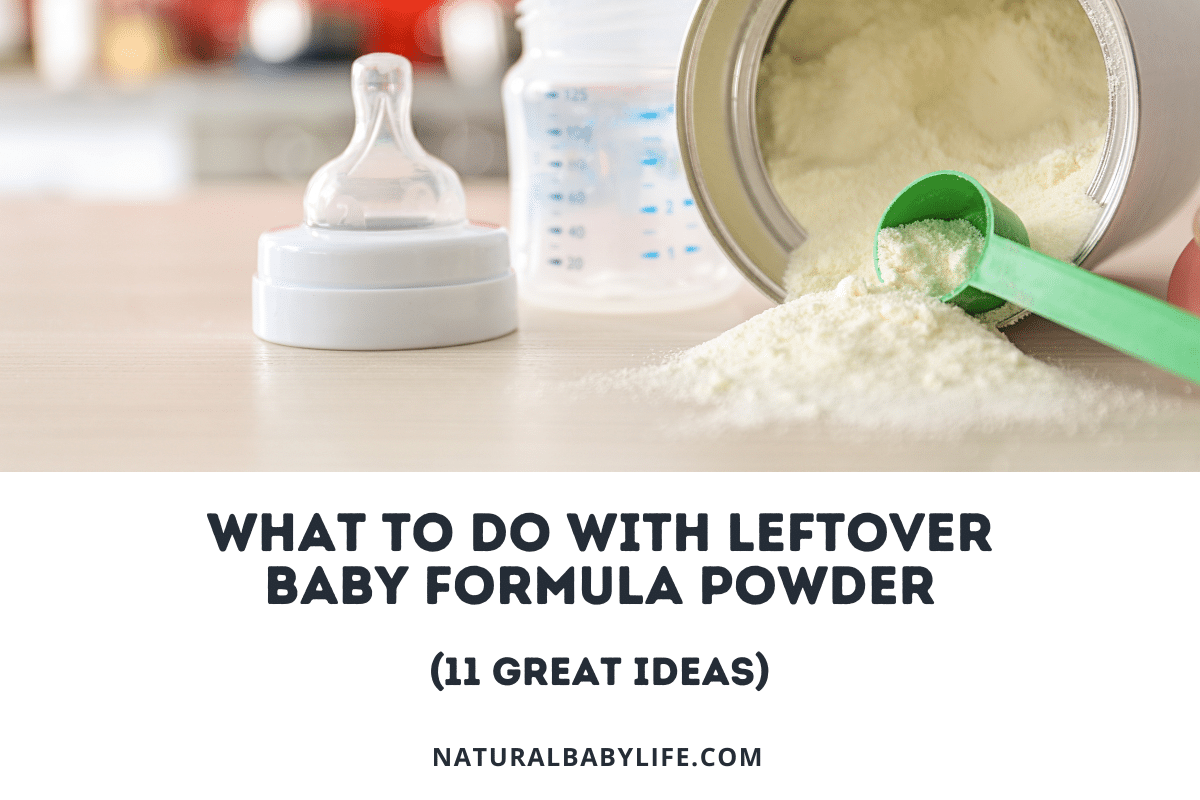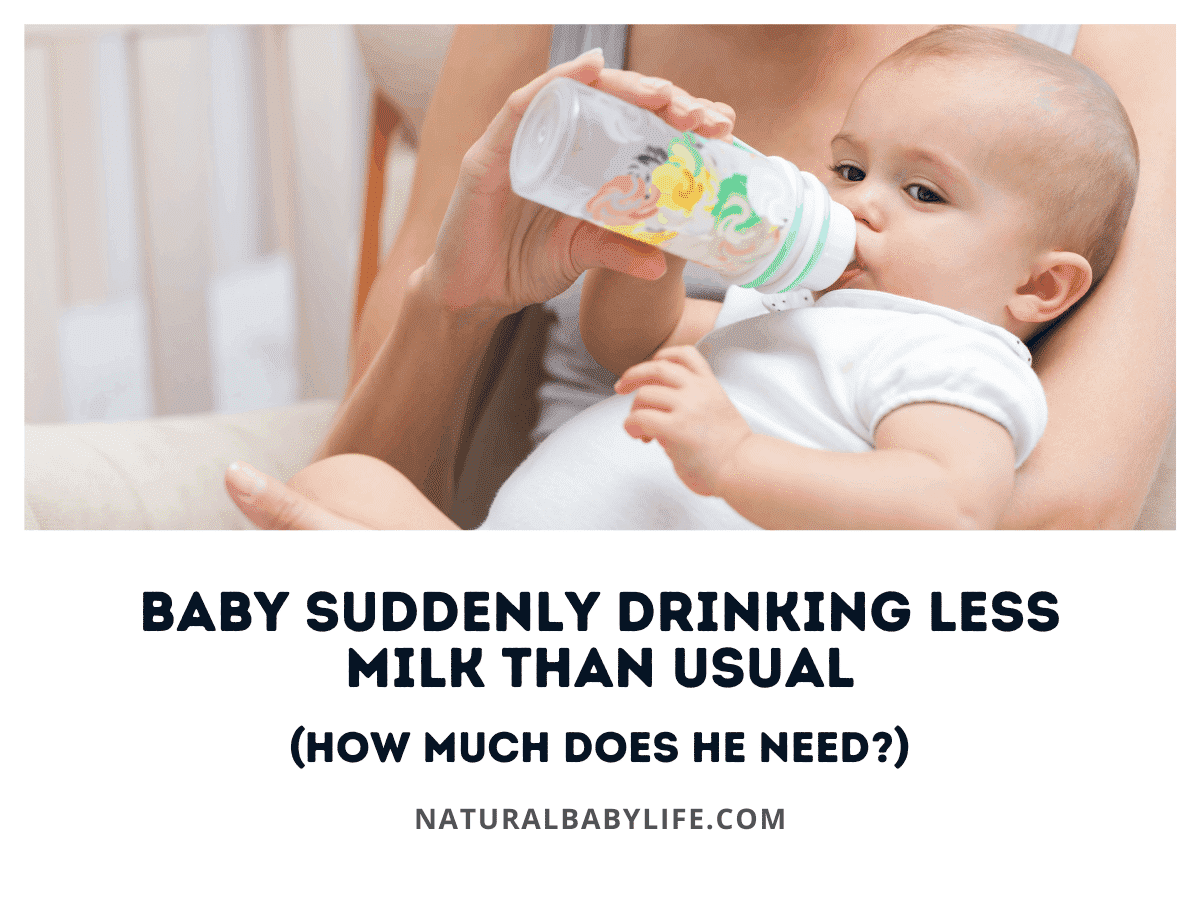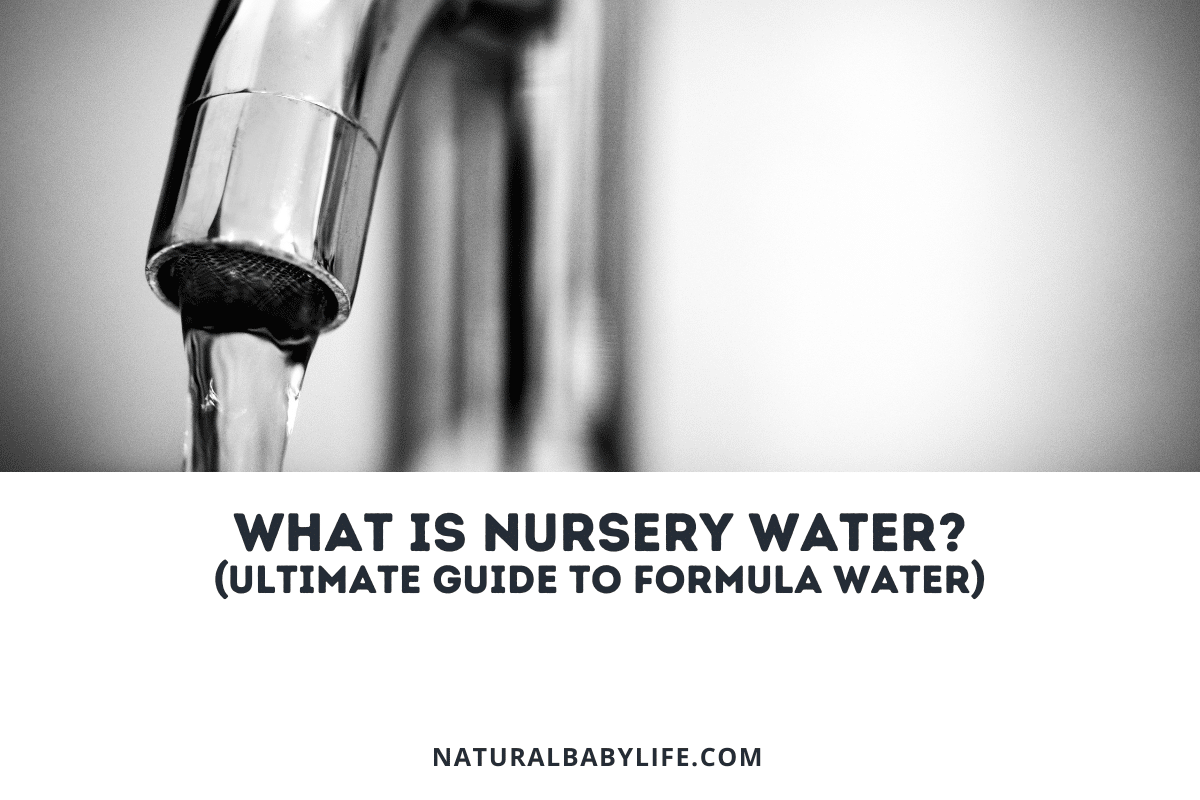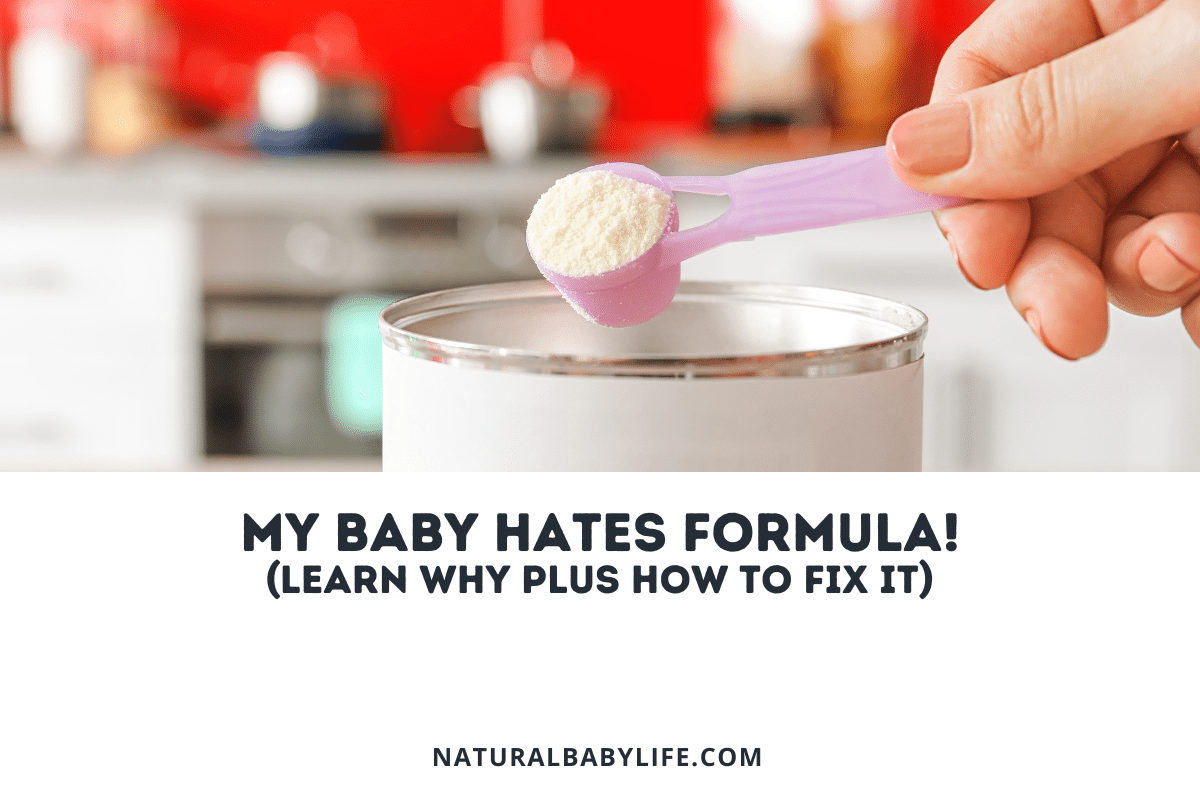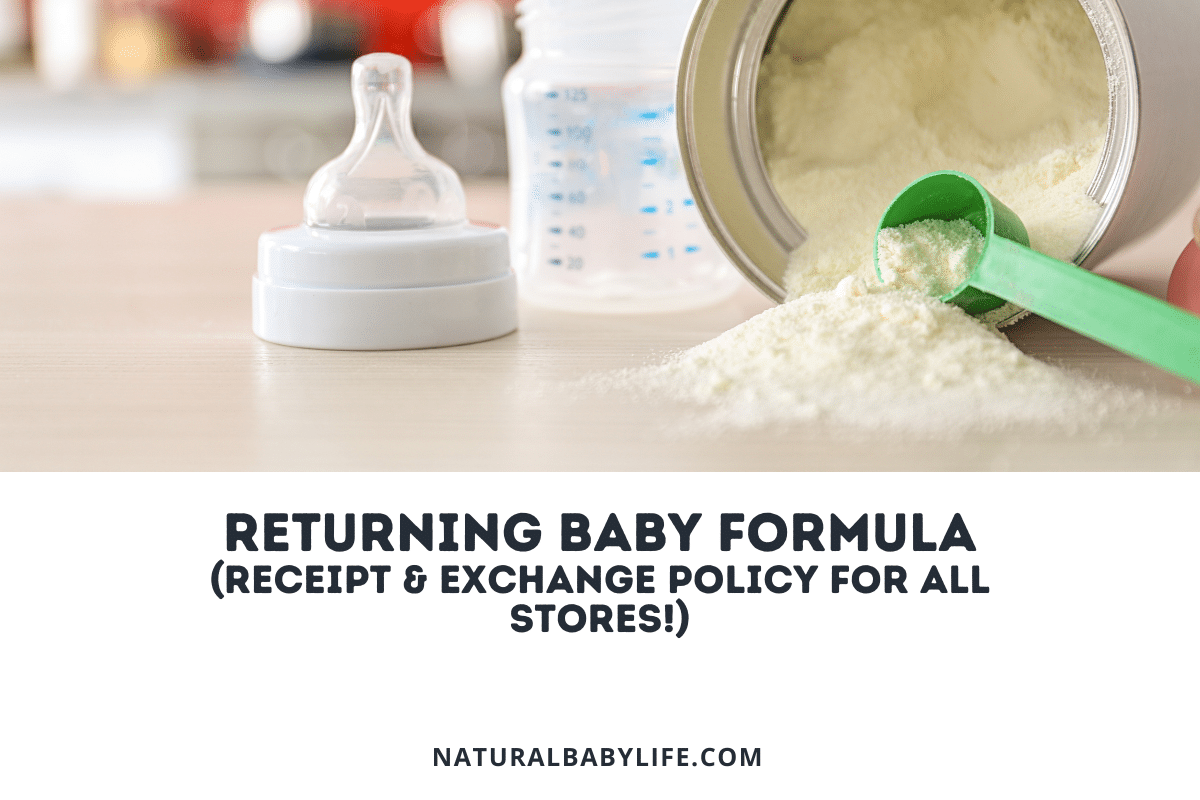Modern baby formula gives parents a safe, effective, nutritionally sound opportunity to feed infants outside of breastfeeding for the first time in the history of our species. Now, whether mothers prefer not to breastfeed or are unable to, their babies can still thrive.
Formula feeding fills nutritional gaps for mothers who cannot produce breastmilk, those who do not produce enough to meet their child’s needs, and families who choose to formula feed exclusively. It gives families of all types the opportunity to raise a healthy child without relying on mom to be solely responsible for the baby’s nutritional needs.
Read on to learn more about formula feeding so that you can decide whether it is right for you. We will look at the benefits as well as some of the considerations to take into account, but most of all, we will look at why formula-feeding families should not feel guilty for the decision.
Table of Contents
Why formula feed your baby?
Families have so many reasons for choosing to use formula, whether exclusively or in combination with breastmilk.
Here are just a few of the reasons a family might choose formula:
- Some women do not produce any or enough breast milk. Sometimes lactation consultants, lactation cookies, supplementary pumping, and all the good intentions and hard work in the world do not result in enough milk to adequately support a healthy baby.
- Some women’s work schedules make pumping impractical. Despite federal laws mandating that employers take steps to make pumping at work possible, some work situations are just not conducive to pumping and storing milk. Whether it’s the dynamics of the workplace, the lack of infrastructure in place, or the hourly nature of work, pumping can become more trouble and burden than it is worth. Women who are hourly employees and will have to make up the time they take to pump have an especially hard decision to make as they decide whether to follow the pressure to breastfeed when it means less time with their baby at the end of the day.
- Some women do not want to breastfeed. Whether due to past sexual trauma or any other reason, some women do not feel the urge to breastfeed.
- Some women find it painful and/or struggle to breastfeed. When breastfeeding becomes a chore that either mother or baby dreads, it is time to reevaluate the system currently in place.
Breastfeeding vs formula feeding
Breastfeeding is considered the gold standard of nutrition for a developing baby for a reason.
Breastfeeding allows mothers the opportunity to bond with their little one, can be much more economical than purchasing formula (especially if mom will be home most of the time and doesn’t choose to purchase a breast pump), and can have major health benefits for both mom and baby both immediately and throughout their lives.
Formula feeding, on the other hand, allows fathers (and other family members) to help with the feeding schedule and have their own bonding time, is more convenient for many families, and can actually have some health benefits that breastmilk lacks.
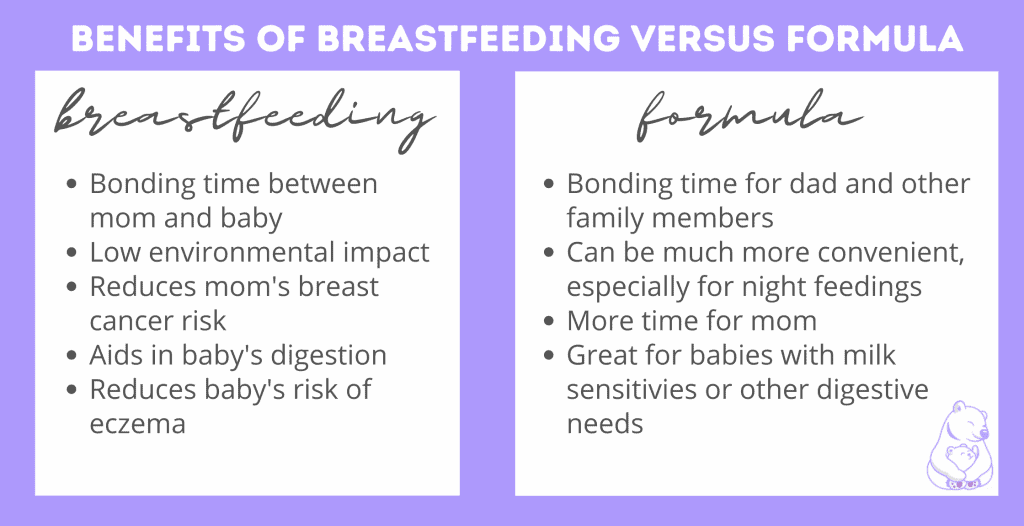
Why breastfeeding is a good option
Every family should weigh the benefits of breastfeeding against the drawbacks in their particular scenario to find the right fit for their needs.
Here are some good points about breastfeeding that someone may take into consideration when making the decision:
- Some mothers enjoy the experience and feel strong and proud for producing their child’s nourishment themselves.
- It reduces the environmental waste and resources used compared to formula feeding.
- Breastfeeding can reduce the mother’s risk of breast cancer.
- Breastfeeding can reduce the baby’s risk of eczema and aid in the baby’s digestion during the first year.
To dispel a common myth, breastfeeding is not free because a woman’s time has value, nor is it free of effort. If women do not have to pump, breastfeeding can be accomplished with no additional expenditure of money, making it an economical decision in some situations.
Why formula feeding is a good option
To say that baby formula is a gift from science is an understatement.
For the first time in human history, our babies are not solely relying on a source of breast milk for survival. And, for the first time, women can choose not to breastfeed and be confident that their babies are still thriving.
In the past, this was an option only for the ultra-wealthy who could afford a wet nurse.
In the nebulous statistics of whether formula feeding is nutritionally inferior to breastfeeding, many lose sight of the human element who is the source of this much-lauded breastmilk: the mother. The mother is a whole woman who can choose whether to offer her body as her baby’s source of food.
It is also often overlooked that a mother is more than a source of breastmilk. The time spent pumping can be time spent doing other things – whether that be for the baby, her family, her work, or just herself. In families that formula feed, the parents can equally share night duties with the baby without the mother waking to feed or pump, so the mother can be well-rested.
All of these things can add up to a great quality of life for the family, a relaxed mother, and consequently, a very happy baby.
Choosing to exclusively formula feed
If you are considering formula feeding, it is helpful to learn what to expect from your first time feeding in the hospital all the way until you transition to cow’s milk at age one.
Formula feeding from birth
The idea of rejecting the lactation consultant and requesting formula at the hospital can be daunting.
Some hospitals and staff do make it needlessly challenging, but preparation and confidence in your decision will leave you feeling better about any uncomfortable interactions.
Some hospitals and care providers will not bat an eye when you tell them that you are formula feeding. But in the event you won’t be at such a hospital, here are some tips to make things go more smoothly:
- At any pre-birth pre-registration or intake registration, request that it be noted in your file that you are formula feeding. It doesn’t hurt to add that you do not want to be counseled on breastfeeding. Care providers should leave it at that, and providers that do respect the autonomy of a patient will not push breastfeeding any further. Remember, every woman has the right to make decisions for their own body without being required to explain them.
- Ask about the hospital’s formula feeding protocol during your hospital tour or pre-registration so you know what to expect. Some parents report that they have encountered hospitals with the “baby-friendly” designation that will not provide formula. If that’s the case, be sure to pack some formula with you.
- The nurses may not be knowledgeable about different types of formulas, so be prepared to let them know which one you want to use rather than relying on them to explain the merits of each one.
- If you feel at all stressed about the hospital and their support of formula feeding, pack some ready-made formula bottles in your bag just in case. That way, you will have one less thing to worry about. If you don’t use them at the hospital, you will definitely make use of them at home.
- Specifically, assign your birth partner with the task of running interference if anybody starts pressuring you to breastfeed.
While some people experience true horror stories at the hands of difficult nurses, many, if not most, hospitals have professional, knowledgeable staff who will treat you with competence and kindness regardless of your feeding decisions.
If you doubt the ability of your hospital or care providers to treat you well, it is absolutely time to consider your other birthing options. For people in areas with limited hospital or birthing center options, consider engaging the services of a doula if you want extra support during labor and delivery. A doula can be that extra advocate in the room if you are concerned about having a bad experience.
How much formula does baby need?
It can be really challenging to predict how much formula your baby will consume throughout the course of that first year. Children grow at different rates, take to eating solid food at different times and in different quantities, and some babies just eat a whole lot more than others.
Formula makers offer us some different guides for expected consumption, but always check in with your pediatrician regarding ounces consumed and ask them whether feedings need to be adjusted based on your baby’s growth curves.
How much formula does baby need during the first year
| Age | Amount (per feeding) | Frequency |
|---|---|---|
| 1 month | 2-4 oz | 6-8 times a day |
| 2 months | 5-6 oz | 6-8 times a day |
| 3-5 months | 6-7 oz | 5-6 times a day |
| 6-12 months | Begin to reduce formula feedings as your baby starts eating more solids | 5-6 times a day |
What are the risks of formula feeding?
Much of the backlash, and rightly so, against the formula industry came in the 1970s when formula representatives peddled their product for “free” to mothers in impoverished areas. While using the free product, the mothers’ milk dried up, so when they ran out of the sample, they could not return to breastfeeding. Many lacked access to safe drinking water, and even more lacked funds to continue purchasing adequate amounts of formula, and would try to stretch it by adding more water, which left the babies undernourished.
Provided that you have access to safe, clean drinking water and correctly measure the formula, there are no longer significant risks associated with formula feeding.
The tangible risks of formula feeding can be mitigated by parents:
- Always follow the storage instructions provided by the formula manufacturer. Discard prepared formula according to those instructions, and do not use expired formula.
- Do not deviate from the mixing instructions provided by the formula manufacturer. Adding too much water can make your baby sick from water hypoxia, or a sodium imbalance caused by too much water. This can make your child very ill, and some children can even die.
Long-term effects of formula-fed babies
Data reviews indicate that the benefits of breastfeeding are frequently overstated due to a lack of sufficient scientific studies. It is exceptionally challenging to study this issue and parse out what differences in compared children are due to the food they receive versus other environmental and genetic factors.
Researchers have realized that the intention to breastfeed, regardless of any follow-through, produces children with health outcomes similar to breastfed children, indicating that much of the breastfeeding benefit is due to the lifestyle choices and parenting practices that families who breastfeed are likely to implement.
Further analysis of breastfeeding data indicates that the return of benefit is quite small. For example, 2 to 3 children would need to be breastfed to prevent 1 ear infection prior to the age of two. After that, there is no reduction in ear infections.
Breastfeeding rates vary drastically across income, race, and education, so it is difficult to identify which outcomes are due to breastfeeding versus the benefit of having sufficient income to decrease parental stress, the benefit of having sufficient family time and quality interactions with a child, the benefit of access to good solid food nutrition, and so on.
There is no reputable research to support concerns that formula-fed babies will encounter future ill-effects solely from being formula fed rather than breastfed.
For more information and analysis of the currently available data regarding any differences in outcomes between breastfeeding and formula reading, take a look at Cribsheet by economist Emily Oster.
Feeding baby formula and breast milk
Families who supplement breastmilk with formula will find that the process is actually quite easy.
The biggest catch will be to speak to your child’s pediatrician to discuss the volume of each needed for your child’s growth. The recommendation is generally for 2 ½ ounces of formula per pound of body weight.
For breastmilk, take your baby’s weight in ounces and divide by 6. That figure is the number of daily ounces of breastmilk your baby needs.
Combination feeding breast milk and formula
To combination feed, put both breast milk and formula in the same bottle.
Combining both in the same bottle may encourage your baby to eat more if they prefer the taste of breastmilk, but it can lead to breast milk being wasted if your baby does not finish the bottle.
Formula bottles must be discarded 1 hour after the baby starts drinking from that bottle.
Alternating breast milk and formula
Some parents prefer to start feeding with as much breast milk as they have and finish with as much formula as the baby needs.
If your baby does not like the taste of formula, they may refuse to eat, leaving your little one underfed. It may be more logistically convenient to alternate full feedings between breastmilk and formula.
A baby may prefer either the breastmilk or formula and fight the feeding that features the non-preferred milk, but they will likely be hungry having not eaten for a few hours and eventually submit.
Rules for mixing breast milk and formula
When mixing breast milk and formula, the number one rule is to remember to follow the rules for each one and give priority to the more restrictive rule.
For example, the formula must be discarded 1 hour after the baby begins feeding from that bottle. Breast milk may be held over until the next feeding. If the bottle has both, discard after 1 hour.
Prepared formula may be refrigerated up to 24 hours before discarding. If the bottle contains both breast milk and formula, discard the bottle when the formula hits its expiration point.
Choosing the right formula for baby
Selecting a baby formula is no easy task because there are so many different types on the market, and each one boasts some special benefit. Ultimately, no formula replicates breastmilk, and all formulas must meet the FDA’s threshold for nutrients.
The best formula will always be one that your baby’s tummy tolerates well (when baby’s not happy, nobody’s happy).
Here are a few options that have reproduced many of the same elements in breast milk:
- Earth’s Best Organic Baby Formula – This formula is an organic favorite that is designed to be as close as possible to breastmilk. It comes in varieties for sensitive bellies as well.
- Enfamil Neuropro Gentlease – While this formula is not organic, it is the only formula that contains milk fat globule membrane, which is a membrane found in breast milk proven to support brain development.
- Happy Baby Organic – This organic formula also mimics the vitamins and minerals found in breast milk. It is free of corn syrup and GMOs.
| Image | Title | Price | Prime | Buy |
|---|---|---|---|---|
Top Top
Top | Earth's Best Organic Dairy Infant Powder Formula with Iron, Omega-3 DHA and Omega-6 ARA | PrimeEligible | Buy Now | |
 Top
Top | Enfamil NeuroPro Gentlease Baby Formula, Brain and Immune Support with DHA | PrimeEligible | Buy Now | |
 Top
Top | Happy Family Baby Organic Infant Formula Milk Based Powder with Iron | PrimeEligible | Buy Now |
Product prices and availability are accurate as of the date/time indicated and are subject to change. Any price and availability information displayed on [relevant Amazon Site(s), as applicable] at the time of purchase will apply to the purchase of this product.
Prices pulled from the Amazon Product Advertising API on:Types of infant formula
To add onto the challenge of selecting a formula, you must keep in mind that there are formula different types.
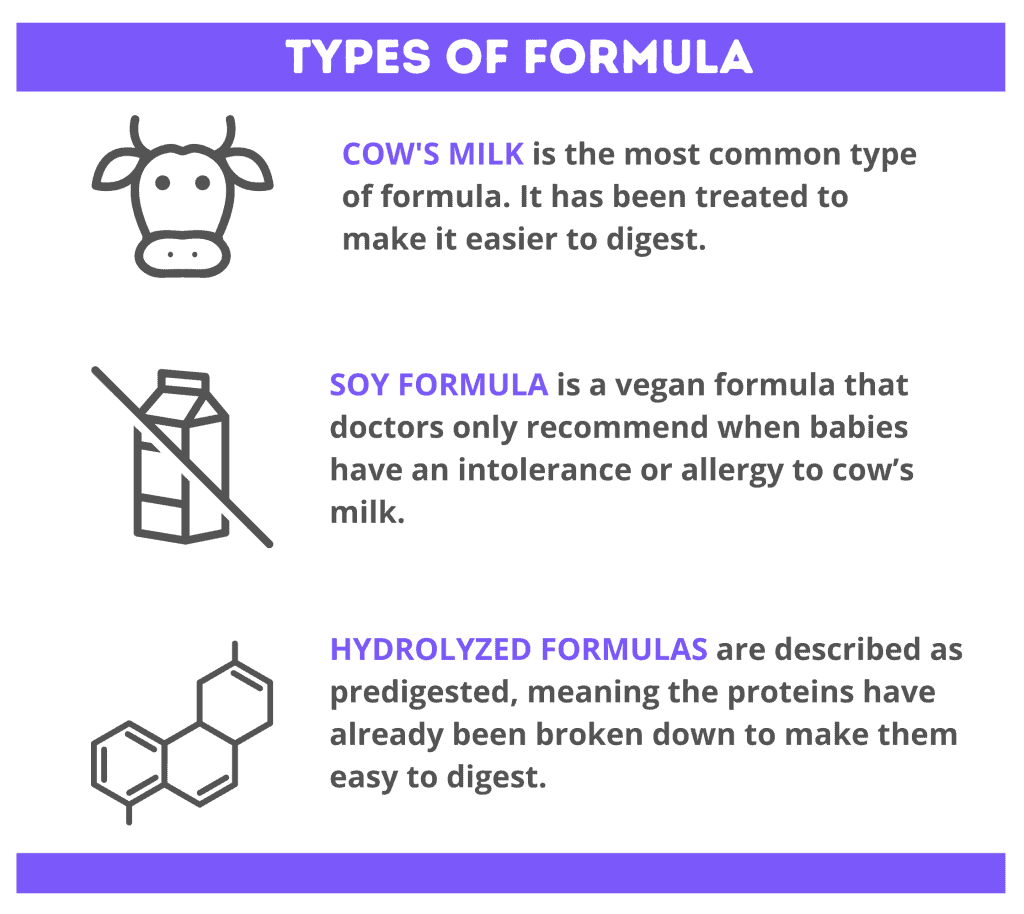
No matter the brand, your baby’s formula will be built on one of these nutritional bases:
- Cow’s milk is the most common type of formula. It has been treated to make it easier to digest.
- Soy formula is a vegan formula that doctors only recommend when babies have an intolerance or allergy to cow’s milk.
- Hydrolyzed formulas are described as predigested, meaning the proteins have already been broken down to make them easy to digest. Consult your pediatrician before using this type of formula.
Specialized formulas are usually very expensive and are targeted at specific needs that premature or immunocompromised babies may have.
Forms of infant formula
In addition to choosing a type of formula, parents also need to be prepared to choose its format.
Infant formula comes in three forms: ready-to-feed, concentrated liquid, and powdered.
Ready-to-feed formula comes pre-mixed with no need to add water or do anything else. This is the form in which hospitals provide formula. It comes in sealed, single-serve nursette bottles that you screw a nipple directly on to. Ready-to-feed formula also comes in larger jugs that you can pour into your own bottles. This is the most expensive type of formula. Doctors may recommend it for pre-mature or immunocompromised babies.
Concentrated liquid formula requires that you mix the can of liquid with water and use the whole thing within a set period of time, usually 24-48 hours. The concentrated liquid formula is less expensive than ready-to-feed and more expensive than powdered. The benefit to this form is that it is sterilized, which doctors may recommend for premature or immunocompromised babies.
Powdered formula is the least expensive and most popular type of formula. Powdered formula gives flexibility in preparation: families can pre-mix a day’s worth of formula and store it in a pitcher in the refrigerator or you can prepare one bottle at a time as needed.
Which formula is closest to breastmilk?
No one formula is closest to breast milk.
Each company claims to offer a product “closest to mother’s milk,” by introducing lines that encourage brain health or physical development and growth or even taste.
Researchers have not given us an objective report on which one, or ones, are actually most similar to breast milk.
One formula that rather uniquely emulates the changes in breast milk as the baby ages is HiPP Organic Formula. This formula comes in stages to support each new stage of growth.
Is it okay to switch formulas?
Unless your pediatrician indicates there is an emergent need to switch formulas immediately, it is best not to switch your baby cold turkey. Dog owners may be familiar with the concept of integrating new kibble to prevent digestive upset, and the same principle applies to babies.
Start by adding ¼ bottle of the new formula to each feeding the first day. The next day, make the bottles ½ and ½ of the old and new formulas, and then the third day, make the bottles predominantly new formula with the old brand added in.
While you may want to change formulas when finding the one that is right for your baby, it’s best to stick with one once you find the best choice for your little one.
Everything you will need to formula feed your baby
Formula feeding often gets a bad reputation for requiring lots of stuff and adding to the overwhelming baby detritus that can consume whole homes when babies come along.
In reality, a bare-bones formula feeding routine requires fewer things than a breastfeeding baby whose mother sometimes pumps.
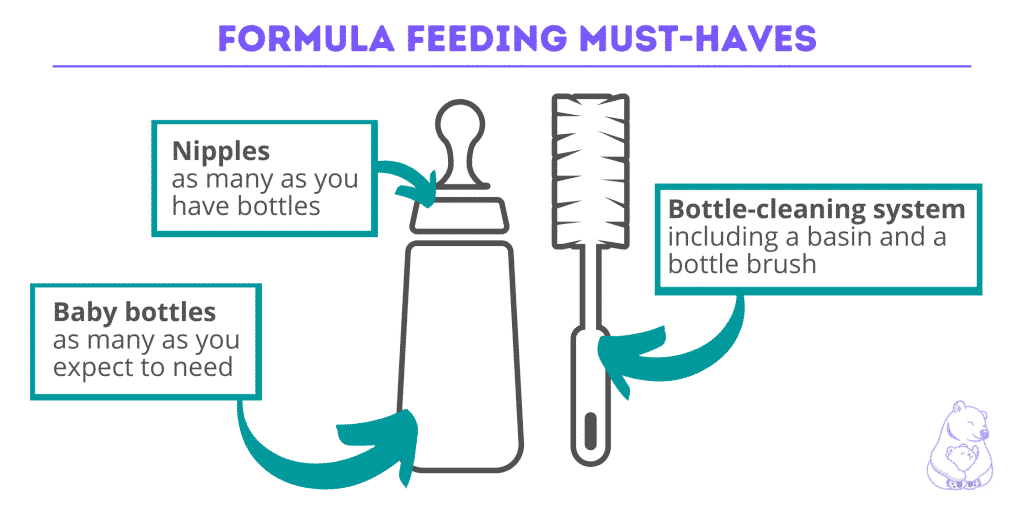
Bottles
One of the most basic needs when formula-feeding your baby is a set of bottles.
There are countless types of bottles on the market, but until you determine that your baby has a specific gastrointestinal need, you can just get a few of the basic bottles sold in stores or online.
For parents concerned about plastics exposure, there are also several types of glass bottles available that function just the same as the plastic bottles. They don’t break as easily as you may think and produce much less waste than bottles with disposable liners.
The number of bottles you need is very subjective and based on preference and your childcare situation. Daycares may require that you deliver bottles pre-filled, so you will need several to get your little one throughout a full day of care. Otherwise, if your child is at home all the time, the number will depend on how frequently you want to wash bottles.
Remember that newborns will probably eat every two hours and buy accordingly.
Nipples
Plan to have a nipple for each bottle.
Ideally, all of your bottles will have the same neck so that your nipples are interchangeable and you don’t have to worry about matching each nipple to a specific bottle.
When you purchase a bottle, it usually comes with a newborn/infant nipple. As your baby ages, you will want to upgrade the nipple to match each developmental stage. As babies get bigger and stronger, the corresponding nipple allows milk to flow out more quickly.
Bottle-cleaning tools
You will need to develop a system for cleaning the bottles, and a lot of it will come from trial and error.
It is best to wash the bottles and nipples in a basin rather than directly in the sink to avoid sink germs and bacteria. Also, get a bottle-cleaning brush to reach the crevices of the bottle.
Either set your bottles and nipples out to dry on a dish-drying rack that you already have, or purchase drying racks meant for bottles or nipples.
That’s it. That is all you absolutely need to bottle feed.
Mixing pitchers
Let’s take a look at some items that can make it more convenient – trust me, you will love convenience at 3 a.m.
One option you will have is to make a day’s worth of formula at one time. This makes pouring a bottle at any time, day or night, easy and fast.
Several brands make self-mixing pitchers so that you can walk away and go about other tasks and then come back to a fully blended pitcher of formula. It can take a bit to whisk the powdered formula into water by hand, so this is a nice time and energy saver.
Formula Keurigs
Imagine a Keurig but for formula. Baby Brezza is the most popular.
Parents put formula in the machine, and out comes a warm, perfectly measured bottle in seconds. These machines are pricey, but some parents love them.
If your baby refuses to drink anything other than a warm bottle, this product will be a balm on your fraying nerves. Depending on the brand of the machine, you may either buy the formula in pods, like a K-Cup or put several servings of powdered formula in the machine for multiple bottles.
Baby-tracking apps
When the mother’s breasts do not fill with milk on a regular basis to cue feeding, it can be a little more challenging for parents to track time between feedings. Especially in the newborn phase, the days can be such a blur and feel like a total time warp.
In addition to tracking to ensure your little one is eating enough, specialized apps can be so helpful for identifying your baby’s internal schedule so that you can better differentiate the nap cry from the bottle cry.
A handy app on your phones can let both parents and caregivers track when they change, feed, or feed the baby and note the sleep times.
Bottle Warmers
Bottle warmers let you warm cold bottles to a safe temperature with less worry about overheating.
Again, if your baby only drinks warm milk, a bottle warmer can be incredibly helpful.
Ideally, you accustom your formula-fed baby to drinking bottles of all temperatures so that you have even more flexibility with feedings.
Formula feeding tips and tricks
Each family will fall into their own routine and develop a handful of tips and tricks that they will then share with their friends and family.
Here are a few tips to give you a head start:
- Plan ahead to make night feedings easy
- Train your baby to drink formula at all temperatures
- Check the fluoride levels in your water
- Sign up for coupons.
Make formula feeding at night easy
One of the most miraculous things about breastfeeding is that it relieves the mother of the burden of being solely responsible for night feedings, and night pumping is no longer needed.
Here are few things families can do to optimize night feeds:
- If space allows, put a mini-fridge in the nursery or room where the baby sleeps so that you can store pre-made bottles in it for easy access during the night.
- If there is not space for a fridge, and the nursery is a good distance from the kitchen, pre-portion the formula into bottles so that you only have to add water at night.
Get your baby used to drinking all temperatures of milk
Many people warm bottles before feeding them, but babies can easily become accustomed to formula made with room temperature water or stored in the refrigerator.
Your baby’s flexibility will be your best friend when you need to feed on-the-go or in the night.
Check the fluoride levels in your tap water
A cosmetic rather than medical concern with formula feeding is fluorosis.
Formula itself has fluoride, and when that formula is combined with tap water with high levels of fluoride, it can cause discoloration on your baby’s teeth when they come in.
Every water provider should publish their fluoride levels so that you can determine whether fluorosis is a risk with your water. Communities that do not add fluoride or only add low levels do not pose risk.
Sign up for coupons
Many formula brands allow you to sign up online for their coupon programs. Some are better and more plentiful than others, but you might as well save where you can!
Be confident in your decision
Hopefully reading this article lends you confidence if you decide to formula feed.
Families who make this choice can receive unwarranted judgment everywhere from the checkout counter to busybodies in the park. Choosing how to nourish your child is one of many controversial parenting decisions you will likely make, but you can rest assured that neither choice is bad here. Fed really is best.

